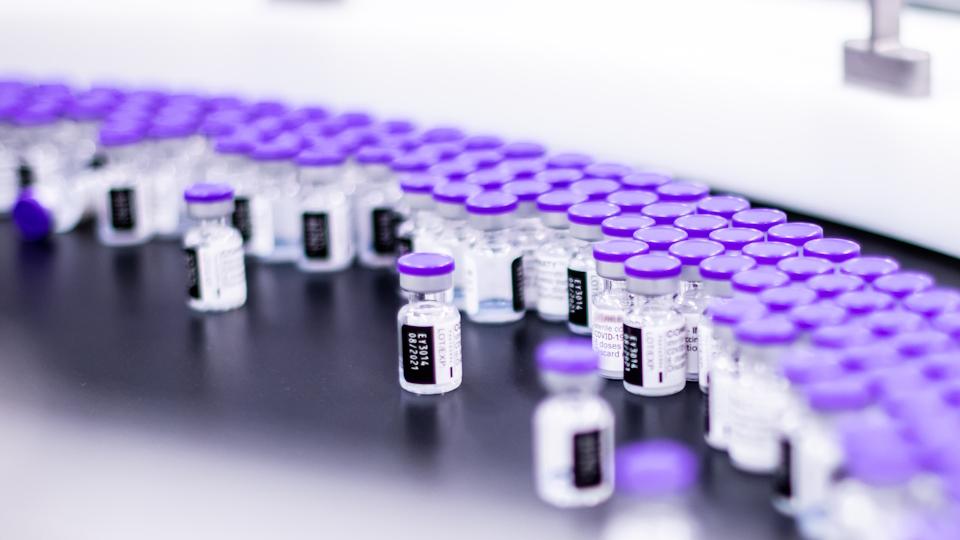US vs EU: How can Europe translate home-grown innovation into biotech success?

We have seen a boom in biotech initial public offerings over the last two years, but many of Europe’s offerings have migrated to the United States. So, what can we do to keep home-grown science on European soil?
From the Pfizer/BioNTech and Oxford/AstraZeneca vaccines to GSK’s lifesaving antibody treatments, European innovation has played a crucial role in the global response to COVID-19.
But while the pandemic triggered a boom in biotech initial public offerings, according to Hannah Kuchler, Global Pharmaceuticals Correspondent at the Financial Times (FT), the vast majority went public on the US’ NASDAQ.
“It highlighted, yet again, concerns about whether fantastic academic science is as easy to translate into companies in Europe as it is in the United States, and questions about how to encourage follow-on capital that allows companies to stay at home,” she said, kicking off an FT panel discussion on how to support pharma innovation in Europe earlier this week.
Current barriers
European science is in a strong position, Stefan Oelrich, President of Bayer’s Pharmaceuticals Division told the meeting, explaining that around 20% of the world’s publications come from the region.
“The question is: ‘why does that not translate into an effervescent biotech sector like we see in the US?’,” he asked.
Vastly different funding mechanisms are at least partially to blame, he said – companies needing €/£200m or more to fund later stage clinical development have “no alternative” to the US NASDAQ route.
Bill Anderson, CEO, at Roche Pharmaceuticals, agreed that Europe had a promising scientific base, but said countries were simply more willing to fund innovative medicines than others.
“We have seen this in industry after industry. Companies that are innovating tend to go and invest in the places where that innovation is most valued and is reimbursed,” he said.
“What’s needed more than anything is support for innovative medicines – that when they are available, they are covered, that they are covered rapidly, and that they are widely adopted. That’s what makes for a healthy environment for the development of the next great thing.”
The COVID lens
The European Commission (EC) is considering both R&D funding and reimbursement as part of its Pharmaceutical Strategy update programme,.
Sandra Gallina, Director General for Health and Food Safety at the EC said that while the project pre-dates the pandemic, COVID certainly brought the need for cross-sector working into the spotlight.
“There is a stronger realisation that it is extremely important to have a good relationship with industry, and I think it can be a win/win relationship,” she said.
While the pandemic was a “great example of what can be done in a crisis”, Anderson asked what happens next.
“Is speeding innovative, life-saving new cancer drugs to patients a crisis? Maybe not, but I think we should apply the same sense of urgency to bringing new medicines to patients with life-threatening diseases,” he said.
Simple solutions, such as making review cycles more efficient, are the most likely to make a difference, he argued. For example, the average time from submission to approval in the US is currently around 250 days, compared to almost 400 days in the EU.
“Then, in many EU countries, there is an additional period from the drug being approved to it actually being covered for patients and there being central reimbursement procedures. That can add another six to 12 months, even years, onto the process.”
Future view
Gallina acknowledged that new approaches to incentivising innovation in the EU were needed as we emerge from the pandemic.
The bloc needs to invest, she said, because the world no longer accepts inequitable access to medicines or that unmet needs should go unaddressed.
“This is not a simple issue. It is very complex, but we are committed to finding a solution,” she said.
Dialogue between industry and policy makers has “never been as intense, constructive, and productive” as it has been over the last two years; building on that should be a crucial part of any future strategy, Oelrich argued.
“When you speak to each other and when you fight a common enemy (like COVID), that builds trust and a different level of communication overall,” he said, adding that this model of working was one part of a “potentially winning formula”.
“You also need to have market conditions that render it attractive to have an industrial and R&D infrastructure based in Europe, that works out of Europe. I think these things are more and more coming together, so I'm optimistic, but I'm not naive.
“This is something that we need to fight for every day.”
About the author
 Amanda Barrell is a freelance health and medical education journalist, editor and copywriter. She has worked on projects for pharma, charities and agencies, and has written extensively for patients, HCPs and the public
Amanda Barrell is a freelance health and medical education journalist, editor and copywriter. She has worked on projects for pharma, charities and agencies, and has written extensively for patients, HCPs and the public













